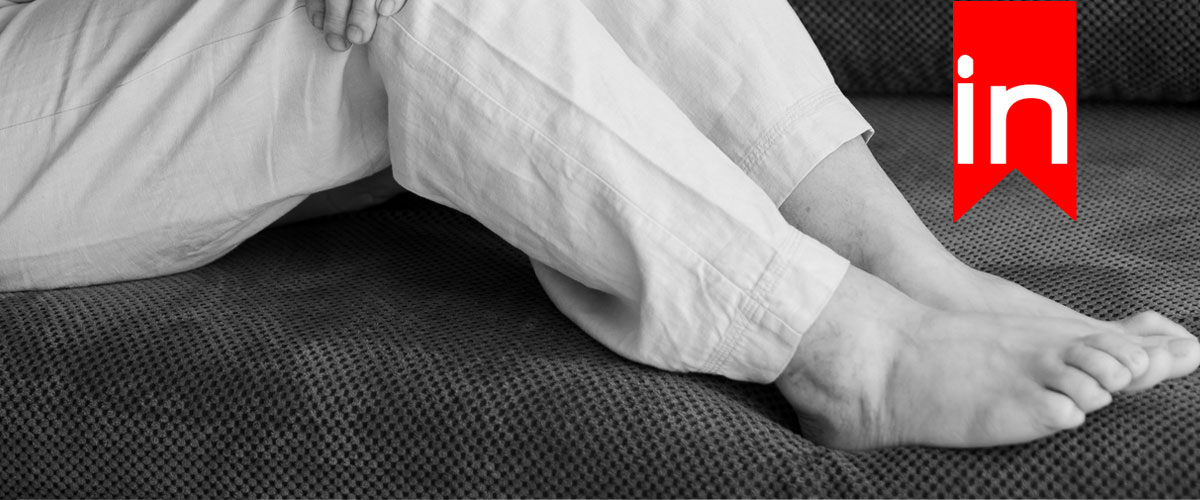Swollen ankles are a common issue for seniors, and it can be a result of various reasons such as poor circulation, heart disease, or certain medications. Swollen ankles can cause discomfort and pain, making it difficult for seniors to move around and perform daily activities. Fortunately, there are several exercises that can help alleviate swelling and improve circulation in the legs and feet.
Highlights
- Regular low-impact exercises like toe raises, ankle circles, and heel slides can reduce ankle swelling and improve blood circulation for seniors.
- Swollen ankles in seniors may indicate serious health issues like heart failure or chronic venous insufficiency, necessitating medical consultation.
- Preventive measures include maintaining a healthy weight, reducing salt intake, and elevating legs to prevent fluid buildup in ankles.
Exercise is an essential part of a healthy lifestyle, and it can be especially beneficial for seniors. Regular exercise can help improve flexibility, balance, and strength, reducing the risk of falls and injuries. Additionally, exercise can help reduce swelling in the ankles by promoting blood flow and circulation. Seniors can benefit from simple exercises that can be done at home, without the need for any special equipment or gym membership.
Causes Of Swollen Ankles In Seniors
Swollen ankles in seniors are a common problem that can be caused by a variety of factors. The most common cause is edema, which is the accumulation of fluid in the tissues. This can happen when the body retains too much salt and water, or when the veins in the legs are not working properly.
More severe and other causes of swollen ankles in seniors include:
- Heart disease: When the heart is not working properly, it can cause fluid to build up in the legs and ankles. Overtime this can lead to congestive heart failure.
- Kidney disease: When the kidneys are not functioning properly, they can cause fluid to build up in the body, including the ankles.
- Liver disease: When the liver is not working properly, it can cause fluid to build up in the body, including the ankles causing ankle swelling.
- Medications: Certain medications, such as blood pressure medications, can cause fluid retention and ankle swelling.
- Arthritis: Arthritis can cause inflammation and swelling in the joints, including the ankles.
It’s important to note that swollen ankles in seniors can also be a sign of a more serious underlying health condition, such as heart failure or kidney disease. It’s important to consult with your doctor if you experience persistent swelling in your ankles or even leg swelling.
Swollen Ankles And Chronic Venous Insufficiency
Swollen ankles can be a symptom of chronic venous insufficiency (CVI), a medical condition in which the veins in the legs cannot properly pump blood back to the heart. When the leg veins are weakened or damaged, blood can pool in the legs, leading to ankle swelling and leg swelling. CVI can also lead to swollen feet, as the blood vessels cannot provide enough blood to the feet. Other common symptoms of CVI include leg pain, heaviness, skin changes, and varicose veins. Treatment for CVI may help reduce swelling in the ankles along with other symptoms, and it is important to seek medical attention if you suspect you may have this condition.
Preventive Measures For Swollen Ankles
Preventing swollen ankles is better than treating them. Seniors can take several measures to prevent their ankles from becoming swollen.
One of the most effective preventive measures is to exercise regularly. Exercise can improve blood circulation, which can prevent fluid buildup in the legs and ankles. Seniors can engage in low-impact exercises such as walking, swimming, and yoga. These exercises are gentle on the joints and can help seniors maintain their mobility while reducing the risk of swelling.
In addition to exercise, seniors can also make some lifestyle changes to prevent swollen ankles. They can maintain a healthy weight by eating a balanced diet and avoiding foods that are high in salt. Salt can cause fluid retention, which can lead to swelling in the ankles. Seniors can also elevate their legs while sitting or lying down. This can help improve blood flow and prevent fluid buildup in the legs and ankles.
Sometimes, swollen ankles can be a sign of an underlying medical condition. Seniors should consult their healthcare provider if they experience persistent swelling in their ankles. The healthcare provider can diagnose the underlying condition and recommend appropriate treatment.
Exercises To Reduce Swelling In Ankles
Swollen ankles can be a common problem for seniors, but regular exercise can help reduce swelling and improve circulation. Here are some exercises that can be done at home:
- Toe raises: While sitting in a chair, lift both feet off the ground and raise your toes as high as possible. Hold for a few seconds and then lower your toes back down. Repeat 10-15 times.
- Ankle circles: While sitting in a chair, lift one foot off the ground and rotate your ankle in a circular motion. Repeat 10-15 times in each direction and then switch to the other foot.
- Heel slides: While sitting in a chair, place both feet flat on the ground and slide your heels towards your body as close as possible. Hold for a few seconds and then slide your heels back out. Repeat 10-15 times.
It’s important to start slowly and gradually increase the intensity and duration of the exercises. If you experience any pain or discomfort, stop immediately and consult with your healthcare provider.
Additionally, incorporating low-impact exercises like yoga or swimming into your routine can also help reduce swelling and improve circulation. These exercises can be done at a local gym or community center, or even at home with the help of online videos or DVDs.
Remember to wear comfortable shoes with good support and avoid standing or sitting in one position for extended periods of time. Making small lifestyle changes like these can go a long way in reducing swelling and improving overall health and mobility.
When To Seek Medical Help
While swollen ankles in seniors can often be treated with exercise and lifestyle changes, there are times when medical attention is necessary. If the swelling is sudden and severe, accompanied by pain, warmth, or redness, it may be a sign of a blood clot or infection, and medical attention should be sought immediately.
If the swelling persists despite lifestyle changes and exercise, it may be a sign of an underlying medical condition, such as heart, liver, or kidney disease, and a doctor should be consulted.
Seniors with a history of heart, liver, or kidney disease, or those who are taking medications that can cause swelling, such as blood pressure medication or hormones, should be especially vigilant in monitoring their swelling and seeking medical attention if it worsens or becomes painful.


